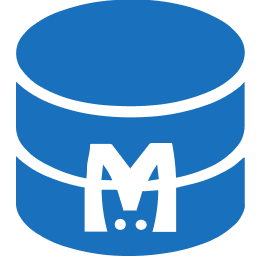You are looking at the documentation of a prior release. To read the documentation of the latest release, please
visit here.
New to KubeDB? Please start here.
Redis External Connection Exposure using Redis Announce
Redis Announce is a feature in Redis that enables external connections to Redis replica sets deployed within Kubernetes. It allows applications or clients outside the Kubernetes cluster to connect to individual replica set members by mapping internal Kubernetes DNS names to externally accessible hostnames or IP addresses. This is useful for scenarios where external access is needed, such as hybrid deployments or connecting from outside the cluster.
Before You Begin
At first, you need to have a Kubernetes cluster, and the kubectl command-line tool must be configured to communicate with your cluster. If you do not already have a cluster, you can create one by using kind.
Now, install KubeDB cli on your workstation and KubeDB operator in your cluster following the steps here.
To keep things isolated, this tutorial uses a separate namespace called demo throughout this tutorial.
$ kubectl create ns demo
namespace/demo created
Note: YAML files used in this tutorial are stored in docs/examples/redis folder in GitHub repository kubedb/docs.
Prerequisites
We need to have the following prerequisites to run this tutorial:
Install Voyager Gateway
Install voyager gateway using the following command:
helm install ace oci://ghcr.io/appscode-charts/voyager-gateway \
--version v2025.6.30 \
-n ace-gw --create-namespace \
--set gateway-converter.enabled=false \
--wait --burst-limit=10000 --debug
Create EnvoyProxy and GatewayClass
We need to setup EnvoyProxy and GatewayClass to use voyager gateway.
Create EnvoyProxy using the following command:
apiVersion: gateway.envoyproxy.io/v1alpha1
kind: EnvoyProxy
metadata:
name: ace
namespace: ace-gw
spec:
logging:
level:
default: warn
mergeGateways: true
provider:
kubernetes:
envoyDeployment:
container:
image: ghcr.io/voyagermesh/envoy:v1.34.1-ac
securityContext:
allowPrivilegeEscalation: false
capabilities:
drop:
- ALL
privileged: false
runAsNonRoot: true
runAsUser: 65534
seccompProfile:
type: RuntimeDefault
patch:
value:
spec:
template:
spec:
containers:
- name: shutdown-manager
securityContext:
allowPrivilegeEscalation: false
capabilities:
drop:
- ALL
privileged: false
runAsNonRoot: true
runAsUser: 65534
seccompProfile:
type: RuntimeDefault
envoyService:
externalTrafficPolicy: Cluster
type: LoadBalancer
type: Kubernetes
If you want to use
NodePortservice. Update.spec.provider.kubernetes.envoyService.typetoNodePortin the above YAML.
$ kubectl apply -f https://github.com/kubedb/docs/raw/v2025.6.30/docs/examples/redis/announce/envoyproxy.yaml
envoyproxy.gateway.envoyproxy.io/ace created
Create GatewayClass using the following command:
apiVersion: gateway.networking.k8s.io/v1
kind: GatewayClass
metadata:
annotations:
catalog.appscode.com/gateway-config: |-
service:
externalTrafficPolicy: Cluster
nodeportRange: 30000-32767
portRange: 10000-12767
seedBackendPort: 8080
type: LoadBalancer
vaultServer:
name: vault
namespace: ace
catalog.appscode.com/is-default-gatewayclass: "true"
name: ace
spec:
controllerName: gateway.envoyproxy.io/gatewayclass-controller
description: Default Service GatewayClass
parametersRef:
group: gateway.envoyproxy.io
kind: EnvoyProxy
name: ace
namespace: ace-gw
$ kubectl apply -f https://github.com/kubedb/docs/raw/v2025.6.30/docs/examples/redis/announce/gatewayclass.yaml
gatewayclass.gateway.networking.k8s.io/ace created
Check the GatewayClass status True.
$ kubectl get gatewayclass
NAME CONTROLLER ACCEPTED AGE
ace gateway.envoyproxy.io/gatewayclass-controller True 16s
Install FluxCD in your cluster
Install FluxCD in your cluster using the following command:
helm upgrade -i flux2 \
oci://ghcr.io/appscode-charts/flux2 \
--version 2.15.0 \
--namespace flux-system --create-namespace \
--wait --debug --burst-limit=10000
Install Keda
Install Keda in your cluster using the following command:
$ kubectl create ns kubeops
namespace/kubeops created
$ kubectl apply -f https://github.com/kubedb/docs/raw/v2025.6.30/docs/examples/redis/announce/helmrepo.yaml
helmrepository.source.toolkit.fluxcd.io/appscode-charts-oci created
$ kubectl apply -f https://github.com/kubedb/docs/raw/v2025.6.30/docs/examples/redis/announce/keda.yaml
helmrelease.helm.toolkit.fluxcd.io/keda created
helmrelease.helm.toolkit.fluxcd.io/keda-add-ons-http created
Install Catalog Manager
Install Catalog Manager in your cluster using the following command:
helm install catalog-manager oci://ghcr.io/appscode-charts/catalog-manager \
--version=v2025.6.30 \
-n ace --create-namespace \
--set helmrepo.name=appscode-charts-oci \
--set helmrepo.namespace=kubeops \
--wait --burst-limit=10000 --debug
Overview
KubeDB uses following crd fields to enable Redis Announce:
- `spec:`
- `announce:`
- `type`
- `shards`
- `endpoints`
Read about the fields in details in redis concept
Redis Cluster with Announce
Create DNS Records
Create dns A/CNAME records for redis cluster pods, let’s say, Redis has 2 replicas and 3 shards.
Example:
A/CNAME Recordfor each Redis replicas with exposed Envoy GatewayLoadBalancer/NodePortIP/Host:- “rd0-0.kubedb.appscode”
- “rd0-1.kubedb.appscode”
- “rd1-0.kubedb.appscode”
- “rd1-1.kubedb.appscode”
- “rd2-0.kubedb.appscode”
- “rd2-1.kubedb.appscode”
Below is the YAML for Redis Announce.
apiVersion: kubedb.com/v1
kind: Redis
metadata:
name: redis-announce
namespace: demo
spec:
version: 7.4.0
mode: Cluster
cluster:
shards: 3
replicas: 2
announce:
type: hostname
shards:
- endpoints:
- "rd0-0.kubedb.appscode"
- "rd0-1.kubedb.appscode"
- endpoints:
- "rd1-0.kubedb.appscode"
- "rd1-1.kubedb.appscode"
- endpoints:
- "rd2-0.kubedb.appscode"
- "rd2-1.kubedb.appscode"
storageType: Durable
storage:
resources:
requests:
storage: 20M
storageClassName: "standard"
accessModes:
- ReadWriteOnce
deletionPolicy: WipeOut
Here,
.spec.cluster.announce.typespecifies preferred dns type. It can be hostname or ip..spec.cluster.announce.shardsspecifies the DNS names for each shards in the replica set..spec.cluster.announce.shards.endpointsspecifies the DNS names for each pod in the specific shard.
Deploy Redis Cluster Announce
$ kubectl create -f https://github.com/kubedb/docs/raw/v2025.6.30/docs/examples/redis/announce/redis.yaml
redis.kubedb.com/redis-announce created
Now, wait until redis-announce has status Ready. i.e,
$ watch kubectl get rd -n demo
Every 2.0s: kubectl get rd -n demo
NAME VERSION STATUS AGE
redis-announce 7.4.0 Ready 6m56s
Now, create RedisBinding object to configure the whole process.
apiVersion: catalog.appscode.com/v1alpha1
kind: RedisBinding
metadata:
name: redis-bind
namespace: demo
spec:
sourceRef:
name: redis-announce
namespace: demo
$ kubectl create -f https://github.com/kubedb/docs/raw/v2025.6.30/docs/examples/redis/announce/binding.yaml
redisbinding.catalog.appscode.com/redis-bind created
Now, check the status of redisbinding objects and ops requests.
$ kubectl get redisbinding,rdopsrequest -n demo
NAME SRC_NS SRC_NAME STATUS AGE
redisbinding.catalog.appscode.com/redis-bind demo redis-announce Current 3m28s
NAME TYPE STATUS AGE
redisopsrequest.ops.kubedb.com/redis-announce-jddiql Announce Successful 2m58s
Connect to Redis as Cluster
To connect to the Redis replica set, you can use the following command:
Collect the announces from the redis object:
$ kubectl get redis -n demo redis-announce -ojson | jq .spec.cluster.announce
{
"shards": [
{
"endpoints": [
"rd0-0.kubedb.appscode:10050@10056",
"rd0-1.kubedb.appscode:10051@10057"
]
},
{
"endpoints": [
"rd1-0.kubedb.appscode:10052@10058",
"rd1-1.kubedb.appscode:10053@10059"
]
},
{
"endpoints": [
"rd2-0.kubedb.appscode:10054@10060",
"rd2-1.kubedb.appscode:10055@10061"
]
}
],
}
Connect with the database:
$ redis-cli -h rd0-0.kubedb.appscode -p 10050 -a <password> -c ping
PONG
Set data in different shards:
$ redis-cli -h rd1-0.kubedb.appscode -p 10051 -a <password> -c set batman appscode
-> Redirected to slot [13947] located at rd0-0.kubedb.appscode:10050
Cleaning up
To cleanup the Kubernetes resources created by this tutorial, run:
kubectl delete redisbinding -n demo redis-bind
kubectl delete rd -n demo redis-announce
kubectl delete gatewayclass ace
kubectl delete -n ace-gw envoyproxy ace
helm uninstall -n ace catalog-manager
If you would like to uninstall the KubeDB operator, please follow the steps here.
Next Steps
- Backup and Restore Redis databases using KubeStash.
- Initialize Redis with Script.
- Monitor your Redis database with KubeDB using out-of-the-box Prometheus operator.
- Monitor your Redis database with KubeDB using out-of-the-box builtin-Prometheus.
- Use private Docker registry to deploy Redis with KubeDB.
- Detail concepts of Redis object.
- Detail concepts of redisVersion object.
- Want to hack on KubeDB? Check our contribution guidelines.



































